Cozumel Seaweed 2023
The Seaweed Situation on Cozumel: 2023
Many beaches in Cozumel, in fact, much of the Yucatan Peninsula, are affected by Sargassum washing up on shore yearly. As recently as last Friday, beaches in Playa del Carmen and Tulum are estimating that nearly 80 tons of seaweed have washed up on their beaches.
Not only is it smelly, but in order to swim in the ocean bathers must often wade up to sargassum in thigh-deep water to pass through to the clear caribbean water beyond.
Additionally, sargassum affects sea turtle reproduction as mother turtles must swim through it to reach the shore to lay eggs and turtle hatchlings, who already have a low survival rate upon entering the water for the first time, are often hampered, stuck and at the will of various ocean predators.
This stinky phenomenon has spurned community action, in the form of beach cleanups, as well as a variety of methods and machinery for dealing with this issue.
What Sargassum is
Sargassum, which derives its name from the Sargasso sea where it originated, may look bad and smell horrible but it’s basically just a brown algae. Many types of Sargassum have been identified; however, Sargassum natans and Sargassum fluitans are the most common invaders.
Sargassum produces in an asexual manner, meaning it can probably be traced back to its original plant; therefore, some consider it the largest organism in the world! Due to totipotency (a cell’s ability to give rise to unlike cells and develop a new organism), when a part breaks away, it’s not the end of it; the fragment drifts and could seemingly reproduce forever. Nonetheless, Sargassum eventually becomes too heavy, less buoyant, and sinks into the deep sea… or winds up on beaches
Also known as Gulfweed, is free-floating ecosystem that provides shelter, and a home for many forms of marine life. It’s considered to be a nursery for several types of fish, including Mahi Mahi.
Sargarssum been shown to prevent sand erosion and preserve beaches. It also has a very high nutrient content and can be used as a natural fertilizer, however until it’s decomposed it can create a variety of issues
How Sargassum Affects Cozumel
Often year after year people ask about the conditions for the beach and shoreline regarding seaweed here in Cozumel. Cozumel is an island, and our predominant winds come from the East and Southeast in the months of April-October and from the North and Northeast in the months of November through March. These winds affect our shoreline and beaches but also currents play a big role in the deposits of seaweed.
On the months where winds come from the East, most of Cozumel’s shoreline on the east will be affected and the west shore will have a benefit. This effect reverses when winds blow from the north: the eastern shores are benefitted and the western shores are affected.
In the following accompanying photos – courtesy of Adrian Cozumel – there are some examples with arrows representing the wind direction, to illustrate the point.
Generally speaking beaches on the northern & southern hotel zones will be relatively free of seaweed, while beaches on the eastern side (or wind ward side) of the island will bear the brunt of the sargassum infestation.
There is a Facebook page entitled Red de Monitoreo del Sargazo de Quintana Roo – which is run by a non-profit group that tracks deposits on the beaches in Quintana Roo. They’ve already released their first graphs of 2023.
Additional Negative Affects
Additionally, the seaweed is stinky. The odor is caused by hydrogen sulfide (H2S), which is produced by it’s decomposition. Reports differ on the possible health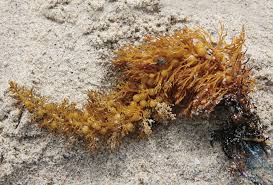 hazards of repeated and continuous exposure to hydrogen sulfide.
hazards of repeated and continuous exposure to hydrogen sulfide.
When deposited en masse on the beaches, sargassum can negatively affect turtle reproduction. Nesting turtles have a hard time arriving on the beach to deposit their eggs, and hatchlings can have a tough go navigating their way out to open sea through the tangle of sargassum.
Sargassum can also provide a haven to bacteria, that can cause an itchy rash. It can interrupt watersports, such as surfing, diving and fishing.
Sargassum Isn’t Without Some Positive Effects
In the open ocean fields of sargassum can serve as a nursery for several types of fish, including Mahi Mahi.
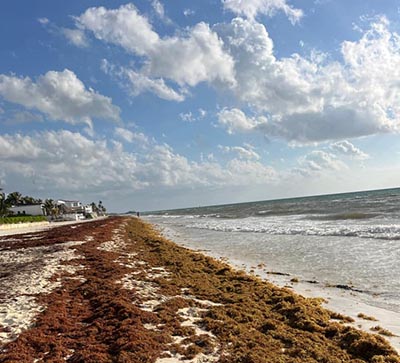 Sargarssum been shown to prevent sand erosion and preserve beaches. Left on its own, in small amounts, sargassum breaks down in a very short time, grinds up, and becomes incorporated into the sand. It also has a very high nutrient content and can be used as a natural fertilizer.
Sargarssum been shown to prevent sand erosion and preserve beaches. Left on its own, in small amounts, sargassum breaks down in a very short time, grinds up, and becomes incorporated into the sand. It also has a very high nutrient content and can be used as a natural fertilizer.
Sargassum is also completely edible, although its slightly bitter flavor doesn’t make it nearly desirable as the more popular northern Pacific and Atlantic seaweed varieties.
Called Hai Zao in traditional Chinese Medicine, ground dried sargassum, and was a mainstay in the treatment of goiters, dropsies of all kinds and even menstrual disorders.
La situación con el sargazo en Cozumel en 2023
Muchas playas en Cozumel, y de hecho gran parte de la Península de Yucatán, se han visto afectadas por el sargazo que año tras año recala en sus costas. Tan sólo el viernes pasado, se estima que 80 toneladas de sargazo recalaron en las playas en Playa del Carmen y Tulum.
No sólo es maloliente, sino que con frecuencia para poder nadar en el mar los bañistas deben cruzar el agua con sargazo que llega a la altura de los muslos para así poder llegar al agua clara del Caribe que se encuentra más allá.
Además, el sargazo afecta a la reproducción de las tortugas marinas pues las madres deben nadar a través de éste para llegar a la playa a desovar y las crías, que de por sí ya tienen una tasa de supervivencia muy baja, al entrar por al agua por primera ocasión a menudo se ven obstaculizadas por el sargazo, quedan atrapadas y a la voluntad de diversos depredadores del océano.
Este fenómeno maloliente ha motivado a la comunidad a entrar en acción limpiando las playas, creando diversos métodos y usando maquinaria para enfrentar este problema.
¿Qué es el sargazo?
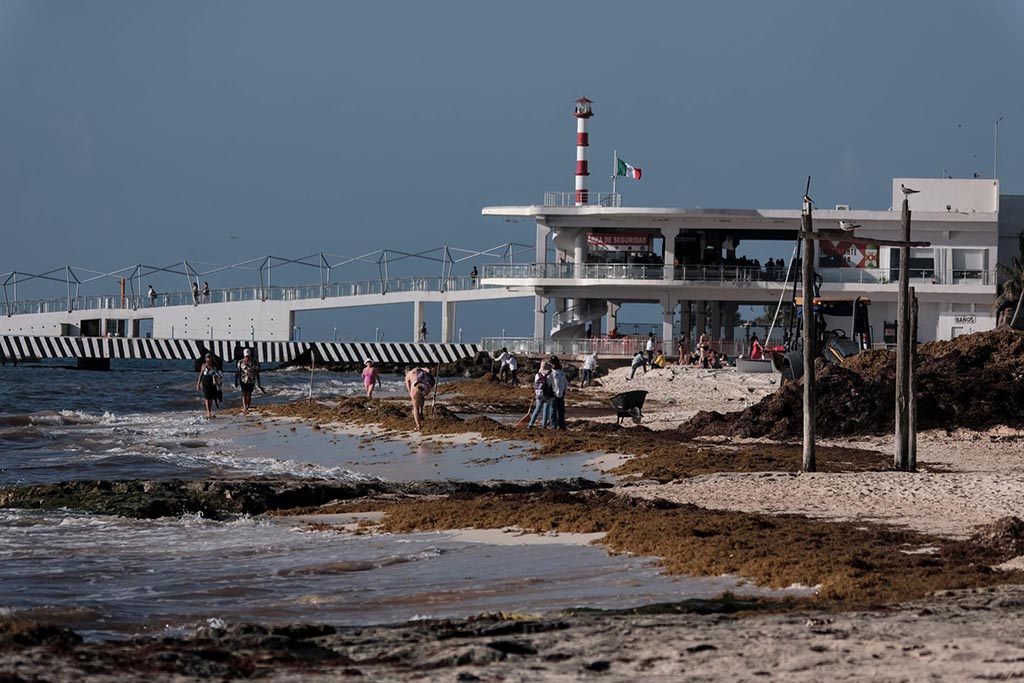 El sargazo, cuyo nombre proviene del Mar de los Sargazos donde se origina, puede tener un mal aspecto, pero básicamente es una alga marrón o parda. Se han identificado muchos tipos de sargazo; sin embargo, los tipos más comunes de sargazos invasores son Sargassum natans y Sargassum fluitans.
El sargazo, cuyo nombre proviene del Mar de los Sargazos donde se origina, puede tener un mal aspecto, pero básicamente es una alga marrón o parda. Se han identificado muchos tipos de sargazo; sin embargo, los tipos más comunes de sargazos invasores son Sargassum natans y Sargassum fluitans.
El sargazo se reproduce de manera asexuada. Esto significa que tal vez se puedan rastrear sus orígenes hasta la planta original; por ello, ¡algunos le consideran el organismo más grande del mundo! Debido a su totipotencia (la capacidad de una célula para originar células distintas y desarrollar un organismo nuevo), cuando una parte se desprende, no es su fin. El fragmento queda a la deriva y aparentemente podría reproducirse por siempre. Ahora bien, el sargazo acaba por volverse demasiado pesado, flota menos y se hunde hacia las profundidades del mar… o termina recalando en las playas.
También se le conoce como alga parda ; un ecosistema que flota libremente dando refugio y hogar a múltiples formas de vida marina. Se considera un criadero de diversas especies de peces incluyendo el pez dorado (mahi. Mahi).
Se ha demostrado que el sargazo evita la erosión de la arena y preserva las playas. También tiene un alto contenido de nutrientes y puede utilizarse como fertilizante natural; sin embargo, puede crear una serie de problemas hasta el momento de su descomposición.
¿Cómo afecta el sargazo al llegar a Cozumel?
Año tras año la gente con frecuencia pregunta acerca de las condiciones en las que se encuentran la playa y la costa de Cozumel en cuanto al sargazo. Cozumel es una isla, y nuestros vientos predominantes provienen del este y del sureste durante los meses de abril hasta octubre, y de noviembre a marzo del norte y del noreste. Estos vientos no sólo afectan nuestro litoral y las playas, sino que las corrientes también desempeñan un papel importante en los depósitos de sargazo.
Durante los meses que se registran los vientos del este, la mayor parte de la costa oriental de Cozumel se ve afectada, y la costa occidental se beneficia. Ese efecto se invierte cuando los vientos soplan del norte: las playas orientales se ven favorecidas y las occidentales son perjudicadas.
Para ilustrar el punto, con las siguientes fotografías, cortesía de Adrián Cozumel, se muestran ejemplos con flechas que representan la dirección del viento.
Por lo general, las playas en las zonas hoteleras norte y sur estarán relativamente libres de sargazo; en tanto que las playas del lado oriental de la Isla (o barlovento), serán las más afectadas con la proliferación de sargazo.
Hay una página en Facebook titulada Red de Monitoreo del Sargazo de Quintana Roo, a cargo de un grupo sin fines de lucro que da seguimiento a los depósitos de sargazo en las playas de Quintana Roo. Ya publicaron su primera grafica de 2023.
Afectaciones adicionales
Además, el sargazo el sargazo emite un mal olor. Este olor es causado sulfuro de hidrógeno (H2S) que emana debido a su descomposición. La información difiere en cuento a los posibles peligros para la salud debido a la exposición constante y continúa al sulfuro de hidrógeno.
Cuando el sargazo se deposita en masa en las playas puede perjudicar la reproducción de las tortugas. A las tortugas que arriban para anidar les cuesta trabajo llegar a la playa para depositar sus huevos, y las crías pueden tener problemas para salir a mar abierto entre la maraña del sargazo.
El sargazo también puede ser un lugar para la creación de bacterias que causan erupciones con picazón en la piel. Puede afectar la realización de actividades acuáticas como el surfeo, el buceo y la pesca.
El sargazo tiene algunos efectos positivos
En mar abierto el sargazo puede servir como criadero de diversos tipos de peces, como el pez dorado.
Se ha demostrado que el sargazo evita la erosión de la arena y preserva las playas. Si no se le perturba, en pequeñas cantidades, el sargazo se descompone en poco tiempo, se tritura y se integra a la arena. También tiene un alto contenido de nutrientes y puede utilizarse como fertilizante natural.
El sargazo es totalmente comestible a pesar de que su sabor ligeramente amargo no le hace tan apetecible como las variedades más populares del norte de los océanos Pacífico y del Atlántico.
En la medicina tradicional china al sargazo seco y molido se le conoce como Hai Zao, y era un componente fundamental en el tratamiento del bocio, hidropesías de todo tipo y hasta para trastornos menstruales.
______________________________
Una ex yanqui de Connecticut quien llama hogar a Cozumel desde hace más de 15 años. Laura escapó al Caribe hace años, desplazándose de una isla a otra dando clases de BUCEO. Se dedicó a perder el tiempo en Jamaica y finalmente se detuvo en Cozumel para pasar unas vacaciones de 2 semanas que aún no terminan. Convenciendo a sus padres que pagaran una elegante universidad privada, obtuvo su título en Periodismo y Laura crea semanalmente Cozumel 4You, medios sociales y artículos promocionales sobre la Isla y también es moderadora en el grupo Cozumel 4 You en Facebook que actualmente cuenta con 25,000 miembros. Fabián, s umuy tolerante marido, desde hace mucho tiempo se resignó a no tener vida privada, pues se ha visto implicado en los diversos proyectos y planes que urde Laura. Son orgullosos padres de diversos perros y gatos rescatados. Mientras contempla su paso a través de la vida en el Caribe mexicano,Laura continúa siendo la pesadilla en la existencia de su muy tradicional suegra mexicana.
- Humane Society Cozumel Pet Week - March 28, 2025
- Cozumel Property Tax & Garbage Taxes - March 28, 2025
- Cozumel 4 You News March2025 - March 28, 2025
An ex-Connecticut Yankee who has called Cozumel home for over 18 years, Laura ran away to the Caribbean years ago, bumped around the islands teaching SCUBA diving, lost some time in Jamaica, and finally stopped in Cozumel for a 2 week vacation that hasn’t ended yet. With a degree in Journalism from a fancy private college she convinced her parents to pay for, Laura writes, edits, and creates the weekly Cozumel 4 You news, social media, and promotional articles about the island, as well as moderates the Cozumel 4 You Facebook group, which currently has over 25,000 members. Her long suffering husband, Fabian, has long since resigned himself to having zero private life, as he’s been involved in her various schemes and plots since his arrival. Proud parents to a variety of rescue dogs and cats, Laura continues to be the bane of her traditional Mexican mother-in-law’s existence, as she muses her way through life in the Mexican Caribbean. ______________________________ Una ex yanqui de Connecticut quien llama hogar a Cozumel desde hace más de 15 años. Laura escapó al Caribe hace años, desplazándose de una isla a otra dando clases de BUCEO. Se dedicó a perder el tiempo en Jamaica y finalmente se detuvo en Cozumel para pasar unas vacaciones de 2 semanas que aún no terminan. Convenciendo a sus padres que pagaran una elegante universidad privada, obtuvo su título en Periodismo y Laura crea semanalmente Cozumel 4You, medios sociales y artículos promocionales sobre la Isla y también es moderadora en el grupo Cozumel 4 You en Facebook que actualmente cuenta con 25,000 miembros. Fabián, s umuy tolerante marido, desde hace mucho tiempo se resignó a no tener vida privada, pues se ha visto implicado en los diversos proyectos y planes que urde Laura. Son orgullosos padres de diversos perros y gatos rescatados. Mientras contempla su paso a través de la vida en el Caribe mexicano, Laura continúa siendo la pesadilla en la existencia de su muy tradicional suegra mexicana.
Cozumel Cruise Ships Schedule
Cozumel Cruise Ships Schedule 31 Cruise Ships Call into Cozumel: Lower Numbers...
Cozumel Cruise Ship High Season
Cozumel Cruise Ship High Season Cozumel Cruise Ship Arrivals In Very High...
2025 Cozumel Carnaval
2025 Cozumel Carnaval 2025 Pre-Carnaval &Carnaval Official Schedules of Events Its official...
Cancun Airport Cozumel Mexico
Cancun Airport Cozumel Mexico How to get from Cancun International Airport to...


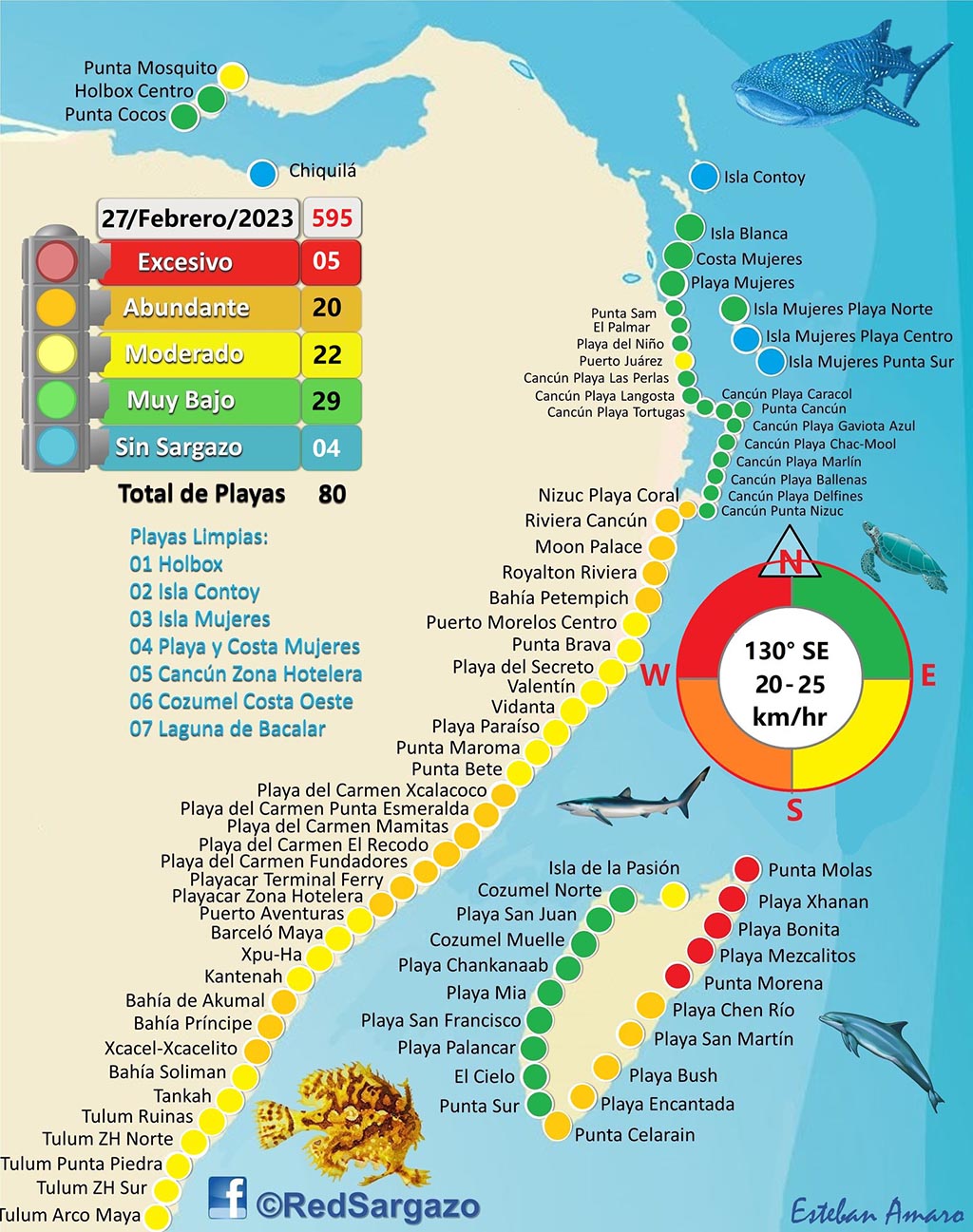
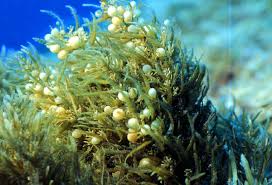
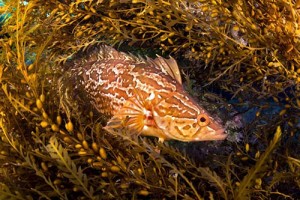
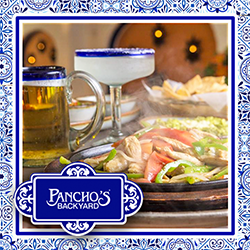






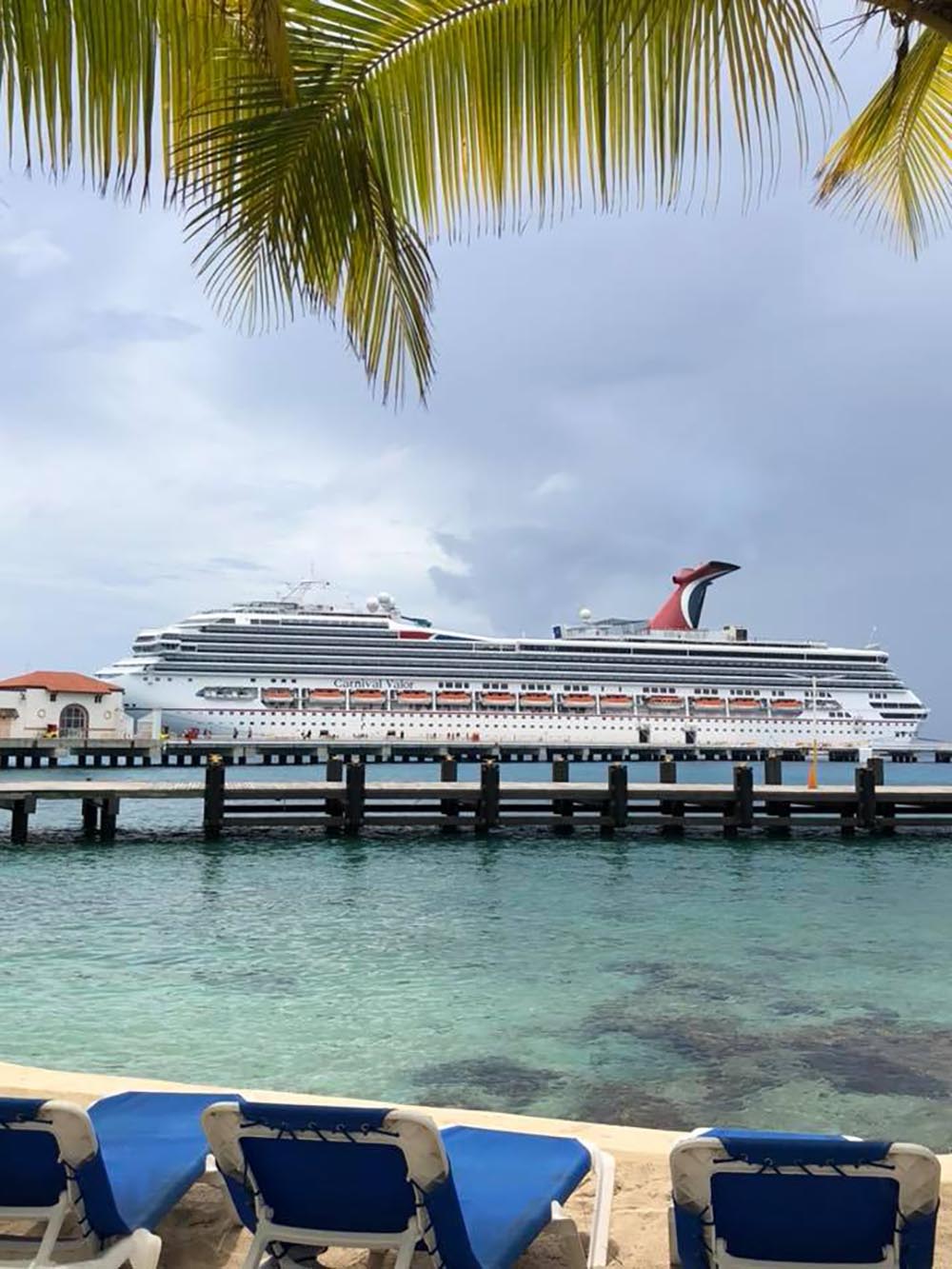
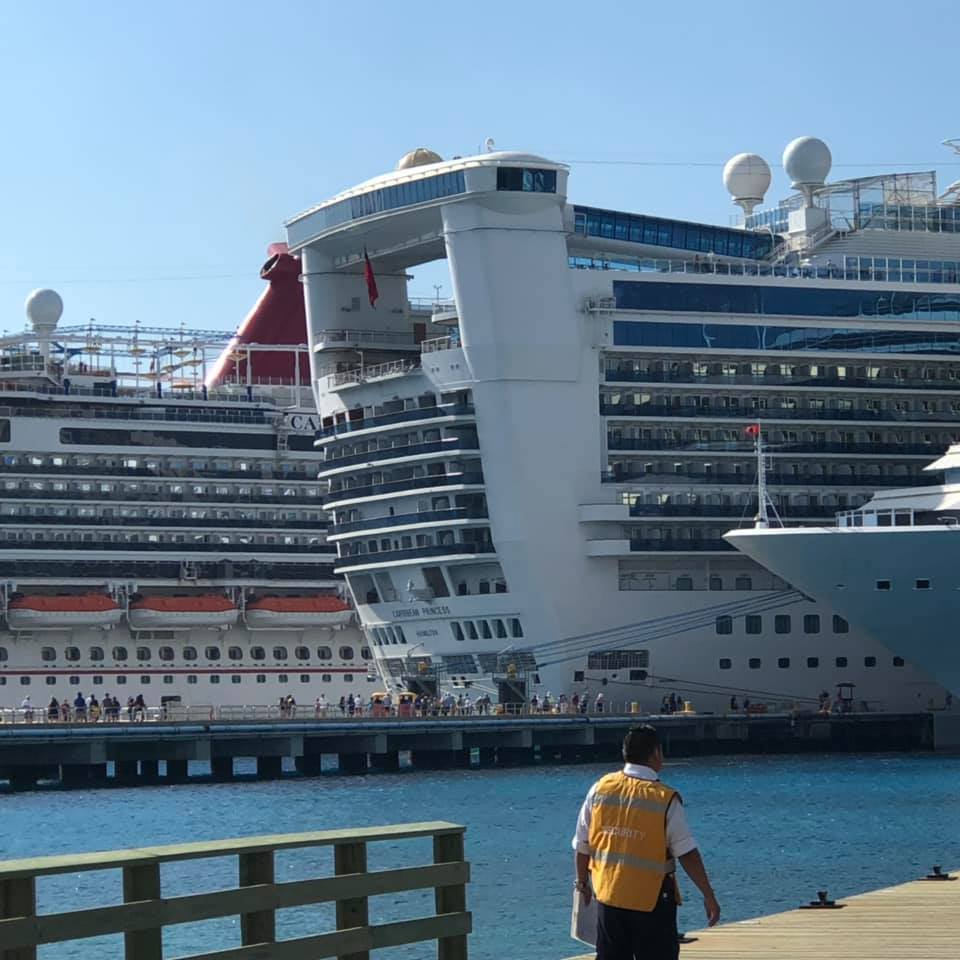
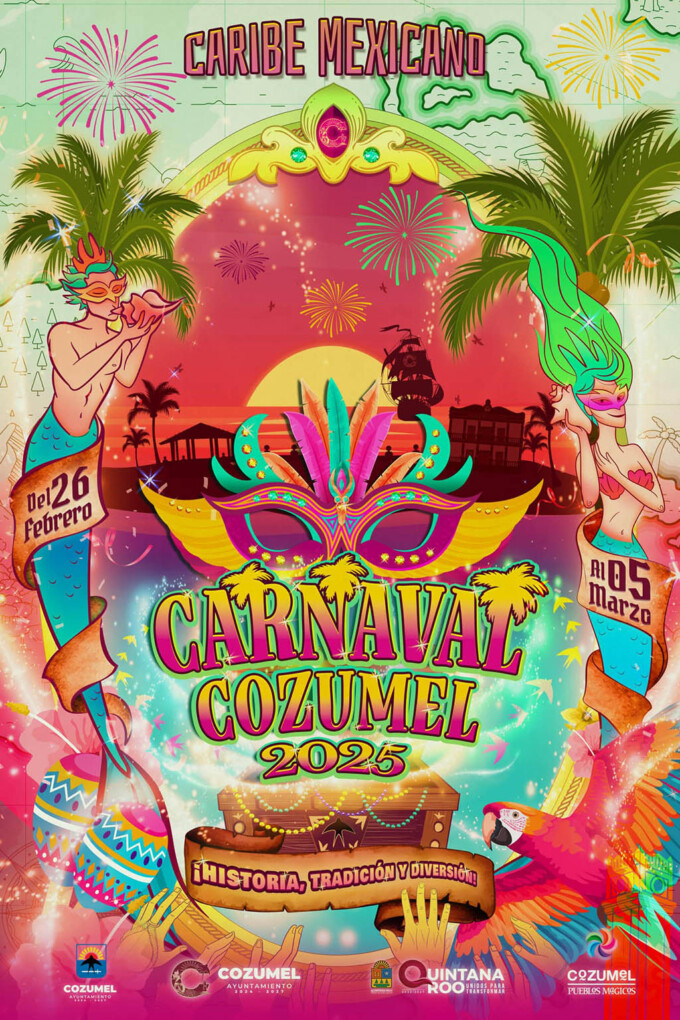
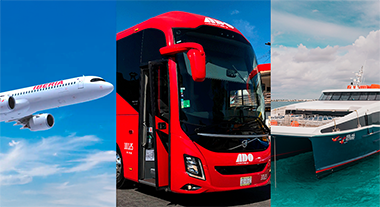







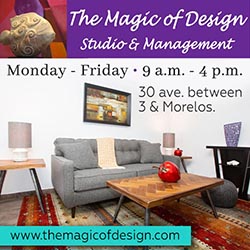
Leave a comment